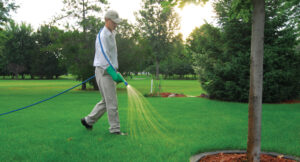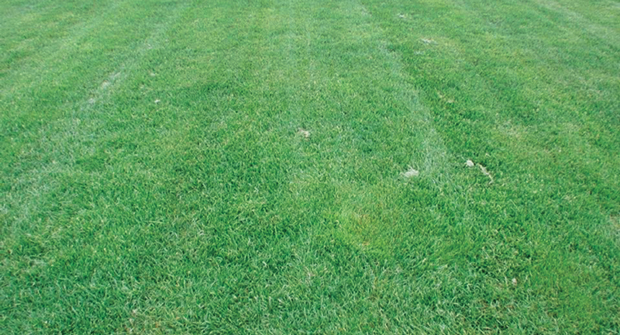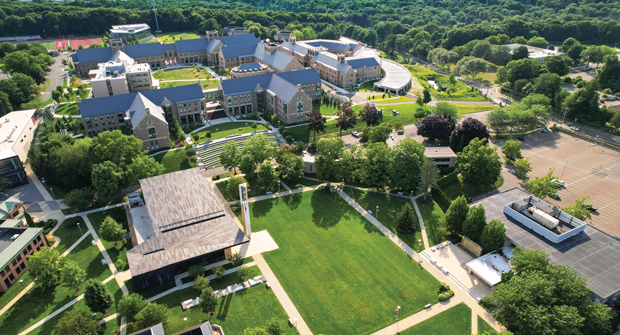Plant growth regulators (PGRs) are versatile tools to lean on in 2025 to overcome labor shortages, maximize on-site productivity, reduce costs and improve overall turf health.
So why aren’t more residential and commercial landscape maintenance contractors using them?
“Imagine if you could cut half of the mowings out of your residential lawns when you’re really baling hay in the spring, and what a huge benefit that would be across the board in gas savings, labor savings and emissions (reductions),” says Aaron Hathaway, a Nufarm technical services manager and a former turf researcher who studied PGRs’ cost-saving potential while at Michigan State University.
“The entire industry has missed the boat (on PGRs),” says Jeff Rampino, the Florida territory manager for Quali-Pro. “And it’s baffled me why PGRs haven’t been adopted more, especially with the costs associated with fuel and transporting people around. Saving an extra mowing on a property each month offsets the cost of the (PGR) for the contractor.”
PGR use is prevalent in golf course and sports turf operations, but experts say it’s lagging in residential and commercial turf maintenance. A significant factor contributing to this conundrum is the separation of pesticide/fertilizer applications from landscape and turf maintenance, including mowing, with different companies often responsible for these tasks.
Labor savior
PGRs’ core formulations have remained largely unchanged, a testament to their proven reliability and effectiveness. But the industry has been slow to appreciate their value as a crucial tool for mitigating shrinking crew sizes due to persistent labor shortfalls.
“It’s become so difficult to find people willing to work in the turfgrass industry,” says Matt Giese, Syngenta’s Midwest technical services manager. “So, while contractors don’t have the labor, they still have the same number of clients who expect to have their lawns mowed.”

But turf pros need to see beyond expanses of grass on residential and commercial properties. PGRs play a labor-saving role in managing areas that require routine trimming and edging, such as around landscape beds, curbs, fence lines, sidewalks and driveways.
“Just like the rest of the lawn, there’s always growth going on in those other areas that need to be addressed,” Giese says. “But if you can get it down to only having to cut those areas once a month rather than every 10 days, that reduces the labor you need on-site and how long your crew is on that site, too.”
Applying a PGR to shrubs and hedges significantly reduces labor and maintenance.
“Here in southern Florida, PGRs are consistently used on hedges because they reduce the frequency of having to trim them from every two weeks to once a month,” Hathaway says. “And when they do have to trim them, it’s pretty light work.”
Managing Mother Nature
PGRs also enhance turfgrass manageability, particularly during periods of rapid growth in spring and fall. This benefit becomes even more critical during extended wet- and warm-weather periods like many U.S. markets experienced in 2024.
“You get a lot of rainfall in your market, and suddenly, the turf is just going gangbusters,” Syngenta’s Giese says. “A lot of times, that turf is coming out of dormancy, and there’s plenty of fertility left over from winter fertilization. So, the turf is blowing out, and it becomes difficult to keep up.”
While it may require a crystal ball and a leap of faith, PGR experts promote the potential for a return on investment offered by preventive PGR applications before anticipated spring and fall surges. These measures can yield substantial savings in labor, time and overall costs by mitigating the need for more frequent and reactive maintenance. When summer hits or winter settles in, turf’s growth flush subsides as the plants go dormant to survive the environmental stress.
Quali-Pro’s Rampino adds that larger landscape companies, especially those doing both chemical applications and mowing, should take full advantage of PGR applications because they free up crews to focus on more profitable activities.
“While mowing is an important service, landscape crews will generate better margins for the company when they’re focused on other work, such as installs,” Rampino says. “By reducing mowing frequency, those crews can focus their attention on those other more profitable jobs.”
Better looking turf
Beyond reducing growth, PGRs offer plant health rewards, including reduced clippings and less thatch buildup. They also promote better-looking turf.
“With high-end residential and commercial properties, aesthetics are really, really important,” Rampino says. “These are great properties to use PGRs on because they improve turf quality and encourage lateral growth, which results in thinker, denser, tighter turf. For high-end clients, this is very important.”
Hathaway explains turfgrass treated with PGRs exhibits a higher chlorophyll concentration, resulting in a denser, more vibrant appearance, improved overall health and enhanced resistance to diseases and drought.
“PGRs are a cool tool for turf because turf is so unique,” Hathaway says. “When you apply PGRs to turf, that plant grows less, but it doesn’t lose the ability to photosynthesize. Instead, (the plant) packs away those carbohydrates that it would otherwise be spending on growth.”
Armed with an abundance of metabolic reserves, this robust energy supply facilitates quicker recovery from natural leaf aging and from the stresses imposed by pests and adverse weather conditions, such as extreme temperatures, Hathaway adds.
“PGRs are such a versatile tool, and they can be tank mixed with virtually anything,” Hathaway says. “I hope they find their way deeper into the turf market this year because there’s a lot of benefits they can bring to contractors.”


